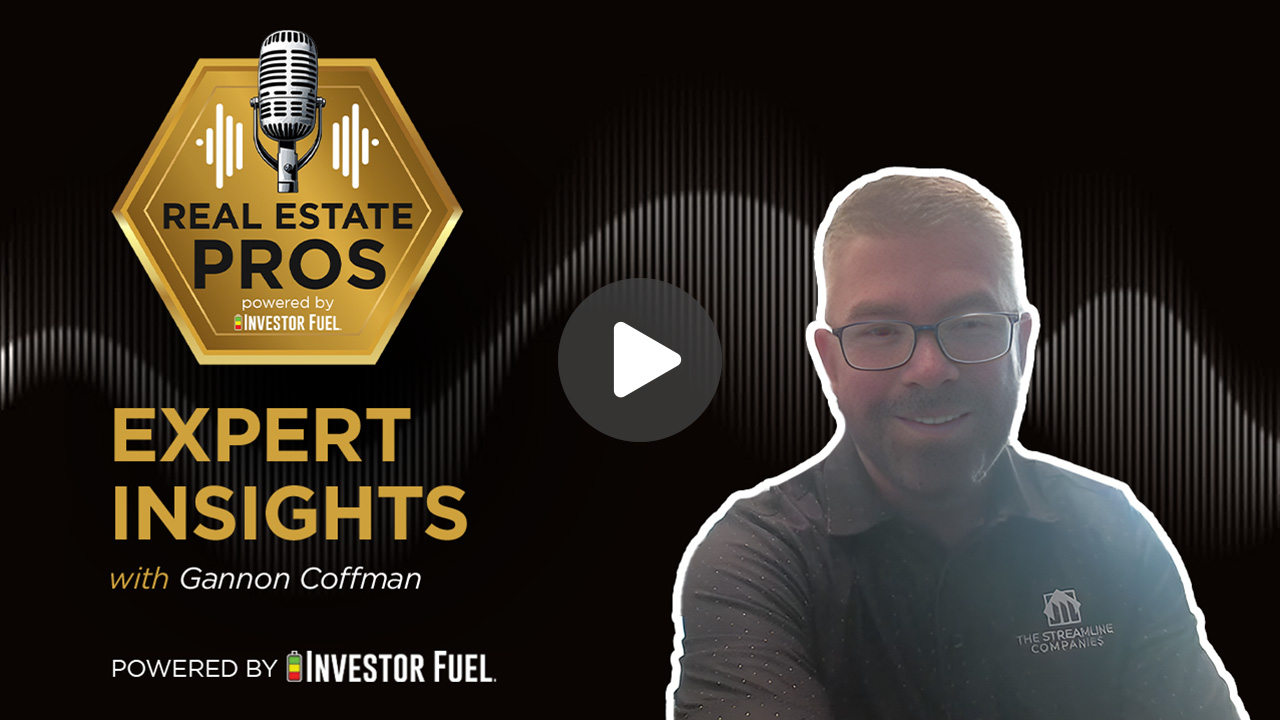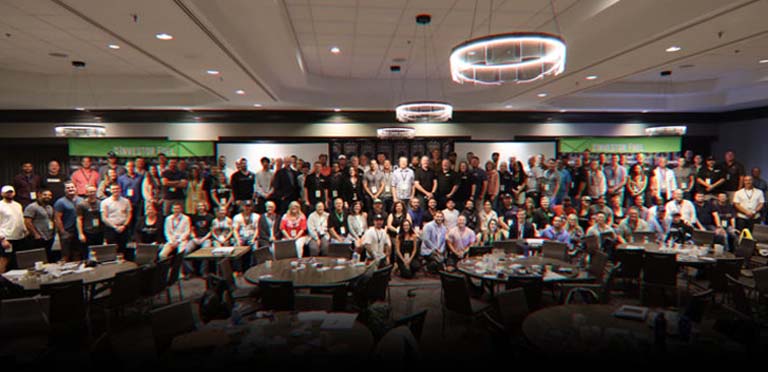
Show Summary
In this conversation, Dylan Silver interviews Gannon Coffman, a commercial real estate broker turned syndicator and operator specializing in medical office buildings. Gannon shares insights into the medical office investment landscape, discussing the importance of tenant evaluation, the impact of private equity, and the future of medical office spaces. He explains the strategies used to acquire and improve medical office properties, the significance of investor relations, and the metrics that guide their investment decisions. The conversation also touches on the challenges and opportunities within the medical real estate sector, including the concept of distress in properties and the evolving nature of medical services.
Resources and Links from this show:
Listen to the Audio Version of this Episode
Investor Fuel Show Transcript:
Dylan Silver (00:01.476)
Hey folks, welcome back to the show. I’m your host, Dylan Silver, and today on the show I have Gannon Coffman out in beautiful Mesa, Arizona, who is in the medical office, entrepreneurial space. Gannon, welcome to the show.
Gannon Coffman (00:16.994)
Thanks Dylan. Appreciate you having me.
Dylan Silver (00:19.076)
This is going to be an interesting show for me. I’ve got lots of questions here and I’ve spoken with a couple of folks who build hospitals. I’ve spoken with folks who are doctors who are trying to get into the real estate space and I’ve spoken with folks who do single family and multi but are looking at medical because it’s one of people’s most important things, right? So people are always going to be having their medical bills and they’re going to pay them. So those spaces are valuable space. How did you get into medical office?
Gannon Coffman (00:22.69)
All right.
Gannon Coffman (00:46.53)
Yeah, great question. So the long, I’ll give you the medium version. I’m a commercial real estate broker turned syndicator and operator and eventually I found my superpower as a lot of people do over time discover what they kind of refer to as their genius zone. Mine was deal making, deal structuring and raising capital and investor relations. So I’m currently the head of investor relations at Streamline.
investment group based in Mesa, Arizona. And we specialize in raising capital for medical office buildings. Class B.
and value add medical office building. same business strategy as you would see in multifamily or any other type of commercial real estate where we are buying an asset, ideally, you know, below replacement costs and either through increasing rents and addressing capital improvements, deferred maintenance, streamlining efficiencies and operations, cutting overhead, raising the net income and then stabilizing it and either exiting with a refi or sale.
generally a five-year hold.
Dylan Silver (01:56.154)
So are you buying the tenants’ businesses in any of these cases, or is it the building?
Gannon Coffman (02:02.348)
Yeah, great question. No businesses, just the real estate itself. Now, when you do buy the building in the entity that is associated, you are assuming those leases. I mean, everything within that will transfer to the new ownership group, but we’re not buying, you know, operating businesses per se.
Dylan Silver (02:24.068)
I guess there’s two ways that I’m looking at this. hear a lot of folks are talking about private equity coming in and buying businesses of various kinds and medical, I think this has been going on for a while. I remember being a kid and you would see a lot of one-off medical practices. But nowadays, I’ve since learned and I’ve since seen that a lot of these one-off medical practices are kind of falling out of fad and they’re really owned a lot by private equity.
And you’re not in that side of it, but you are the the landlord effectively of these businesses Where do you see and of course no one has a crystal ball? where do you see kind of the future of the medical office space? Do you see that it’s just going to become more and more of that or do you see we may see a resurgence of? individual owner operators
Gannon Coffman (03:14.466)
Yeah, great question. think a lot of the private equity groups that you’re looking at are focused more on these dock in a box or, you know, single tenant net leased operators that have come to the realization that they can appreciate all of the characteristics associated with retail pads for visibility, parking, signage, accessibility. So a lot of the Aspen dentals or chiropractors or urgent cares or these other
operators that.
like to be on the out parcel pad sites in front of regional malls or at signalized intersections. Those groups are getting purchased by private equity, but the space we play in is a little bit bigger than what your typical mom and pop investor could take down, but smaller than the institutional level players. So a lot of our deals are anywhere between eight and 30 million, generally, ideally probably right in the 10 million to 12 million total project costs with the acquisition and the improvements.
And then, you know, we see a lot of AI and technology already impacting the medical space, telehealth, and things like that. The Mayo Clinic is making a tremendous push and expansion right now in the market.
And we’re bullish on Phoenix. We’re bullish on medical and healthcare real estate. And we feel that it is a recession resistant asset class. know, to your point earlier, people need doctors in good times and in the bad times. And we feel that it is an asset class of when we take investor capital and we buy these assets that we are confident in executing our business strategy that we can sleep well at night knowing that we will be able to execute our business plan and return investor capital. Right now, I think
Gannon Coffman (05:05.456)
think the theme of all investor capital is the priority is return of capital followed closely secondly by return on capital. But we need to make sure that we can protect the downside for all investors first and foremost and then look at what type of return we can actually achieve over 60 month hold time approximately.
Dylan Silver (05:29.168)
Have you had any or do you know of folks who’ve had business dealing with hospitals and brokering deals on hospitals?
Gannon Coffman (05:38.062)
You know, that is a great question and the short answer is no. That is probably a completely different conversation. Most of our tenants are small business operators. So we are buying, you know, 70,000 square foot.
Class B medical buildings that make up the backbone of the economy and the infrastructure of healthcare. We are not getting into the large healthcare system acquisitions. Right now we have a fund, a Reg D 506C fund, which, know, a 506C means that we can publicly solicit. I can come on podcasts like this and talk about the Streamline Investment Group Fund 3, which is currently open and
active, but only for accredited investors. we can’t take…
sophisticated investors right now at this point. And there are different things that people can do now with current legislation to qualify as an accredited investor if your liquidity doesn’t check all the boxes. But that’s a whole different conversation. But right now, through our fund, we’re looking for opportunities that are probably not quite a full health care system style overhaul.
And I don’t have a lot of optics on what that looks like. I know there’s mergers and acquisitions going on right now, but we’re not playing in that arena quite yet anyhow.
Dylan Silver (07:03.088)
So when you’re reaching out to investors and hearing all this, and I’m getting a better idea of your business, a lot of it I’m imagining, and correct me if I’m wrong, is a discussion of this is what these tenants are doing, this is their kind of cash flow, and this is the reason why these make great tenants. Not just, they’re medical, but this is the specific X, Y, and Z about their business. Because…
as i was shocked to learn just from interviewing folks in the medical space there’s actually medical businesses that still fail for one reason or another including hospitals in texas i was very shocked to learn that said there’s hospitals in texas which over the last five years have have gone under and so you know it’s not bulletproof so what are some of the the evaluating measures that that you used to to to evaluate these underlying businesses of which are are your your tenants
Gannon Coffman (07:57.996)
Yeah, absolutely. Great questions. At the end of the day, we are buying an operating business, right? When you buy a piece of real estate, you have a P &L and an operating statement and you have leases. And at the end of the day, it’s a business that you are coming in and you are trying to increase income. Your net operating income, all commercial real estate is valued based off of the NOI. And then put a cap rate on that. It’s it’s a common
relationship right the lower the cap rate the more expensive the property the lower the cap rate the more valuable the property the higher the cap rate the riskier the property so the higher the risk the higher the return so the way we look at deals primarily is obviously location first right look location location location then we want our business models we can look at distress you know
Why is the seller selling? And sometimes we buy on market deals, sometimes it’s off market, but we are trying to get some type of discount where we can close quickly or we can provide some type of value outside of paying full price for an offer. If you’re going to have a property listed with a broker and it’s going to go through the entire marketing campaign, we’re probably not the right buyer for that. But we have the ability to move quickly. We’re a relatively small office and we’ve got asset management, construction,
property management, legal, acquisitions, all under one roof. So that’s kind of our differentiator. Our decision making group can all be at one table at one point in time and really get things moving forward pretty quickly. But what we look for, there are different metrics. There’s IRR, cash on cash, yield on cost, which is probably our primary driver is yield on cost. It’s your total return divided by your total project cost. So what’s the net income after your all in last bottom?
dollars in and that’s a yield on cost and that’s a metric that we like to look at quite a bit. Some people like equity multiple which is great. So in our current fund right now we have a targeted 15 % IRR. It’s a 1.8 to 1.9 equity multiple and it’s a five-year hold. Now all of that’s subject to change but that’s our targeted projection. So if you were to put in 100 grand today in five years you’re getting 187, 190,000 back.
Gannon Coffman (10:25.008)
and that’s before any type of tax advantages or mitigation you can do on your taxes because of the cost seg and depreciation studies.
Dylan Silver (10:34.648)
generally, and this is brand new to me, so forgive me for my kind of broad strokes and some level of ignorance. Generally, it’s a five year deal and a lot of these these deals when investors are looking at an investment, it’s typically five years is when they’re looking to recoup their funds.
Gannon Coffman (10:41.932)
Yes, sure.
Gannon Coffman (10:52.354)
Yeah, absolutely. your money is…
generally locked up for five years. And that’s not always the case. If we can come in and we can we can improve the property and exit in 36 months, we’re certainly going to look at that. But sometimes whether we refinance or we sell, it’s going to be market dependent. One thing that we do at Streamline also that I think is advantageous for our investors is let’s say at the end of five years, we successfully execute our business strategy and we want to cash out refinance. We refinance, we pull out a lot of the proceeds from
the property, we repay our investors all of their commitment or at least the vast majority of their basis in the deal.
They continue to hold ownership in that moving forward. So they get to participate in what we call infinite returns because if they have all of their investment back and we go on to continue to hold that property for another 10, 15, 20 years, that can become a legacy asset for them and their families where they have already received their total investment back, but they’re still getting quarterly returns. They’re getting appreciation. They’re getting, you know, principal debt pay down from the tenants and that can go on to continue to build legacy income for their
and that’s what we’re trying to achieve. But I think that might have been the long way to answer your question.
Dylan Silver (12:06.65)
Beats Wall Street.
That’s tremendous. wasn’t unaware of that being an opportunity for folks. You talked about distress in the medical office space. So I’m a wholesaler by background, recently newly licensed realtor here in Dallas, but I’m unfamiliar with what distress looks like in the medical space, because I’m thinking of single family homes and you really never know as I’m sure you’re familiar with Gannon, what you’re walking into when you walk into some of these places. in the medical space, it’s hard for me to picture because if it’s got tenants, I’m thinking, well,
How often do you see a distressed medical office? So what does distress look like in this space?
Gannon Coffman (12:45.408)
Yeah, great, great question. Distress in commercial real estate is the same as distress in single family real estate. They’re both owned by people that have the same problems at the end of the day. Death, disease, divorce, relocation.
know, probate, all of the things that go on in the single family world go on in commercial real estate. So the deal that we have targeted for our next acquisition for the fund is a 70,000 square foot, multi-tenant medical, Class B medical office building located at a main thoroughfare, main arterial, signalized intersection, super strong area, high barrier to entry.
buying it at what would be about $105 per square foot, is significantly below replacement costs. It already has $2 million of improvements put into it by the current owner. The owner died. The property is now moving on to a family of their children, the heirs who don’t want to be landlords. So they have agreed to sell the property at an attractive basis.
in addition to providing some owner financing in the deal, which makes it more attractive. So same type of stuff you’ll see in the single family residential. Somebody dies, they don’t want to be a landlord, they want to sell it, they don’t need to cash out on day one, they’d rather take their equity in the form of monthly payments in lieu of a cash out and have a big tax bill. So same structuring we’re doing here is the same you’re doing on your deals. It’s just a different asset class.
Dylan Silver (13:59.696)
That sounds like an incredible deal.
Dylan Silver (14:21.328)
Now, when I have a deal under an assignable contract and I’m looking for investors, 90 times out of 100, they’re going to want that unoccupied at close. They want the tenants out at close. In this case, I’m thinking usually there’s tenants in there. My writer is it kind of 50-50.
Gannon Coffman (14:41.731)
yeah, there’s always tenants in the buildings we buy.
Now there is an opportunity to buy something without any existing tenants, but that’s probably going to be a very heavy lift, you know, a very hairy deal. And what we like to do ideally is buy into something that provides cashflow day one. We won’t go into anything with negative leverage, right? So if you’re all in loan is going to cost 6 % and then you’re buying something at a 5 % cap rate, for example,
Dylan Silver (14:51.792)
Yeah.
Gannon Coffman (15:14.166)
you’re already negative leverage. You’re already in the hole. We don’t like to do that. We like to buy something. Ideally day one where we’re already in positive leverage. If we can start distributions the first quarter, great. But if not, generally our business plan is to get things ramped up and turned around by year two or three where it’s really starting to cook. So we have an 8 %
preferred rate of return in our fund. And that will accrue. if we don’t pay you that full 8 % in year one, we’ll catch you up before the general partner takes any of that deal. So there are ways to structure the capital stack through the equity, we get in through our LP investors. And then we line up with a good bank for our debt or a credit union.
And then we’ll go ahead and take the deals down. So some of the deals may be 70 % occupied to answer your question. And that provides us with meat on the bone to come in and bring that up to 90 or 95 % occupancy. We don’t want anything that’s too beat up and too far off course, but we’re looking for something that we can come in with our business model. And same as what Fix and Flippers do in single family residential, we paint the exterior of our buildings all
same paint, we use the same flooring in the inside, we have the same trim, we have the same program. We’re not recreating
the wheel on every deal. have a program. We stick to it. We’re very good on our economies of scale and our costs and where we can be efficient. And we’ll come in and we’ll implement all of that. We’ll rename the building. We’ll get good monument signage. We’ll do curb appeal. We’ll give it a facelift, but we’re also working on the interior of the building as needed, turning suites as they need to be needed. And if we need to build a suit, remodel the suit, do something specific for a tenant, we can do that. So we’ve got a lot of different arrows in our
Gannon Coffman (17:17.136)
We are currently building for other developers here in town through our construction company, running programs and projects through the local municipalities for planning and zoning. then we’ll go ahead and asset manage those for these other groups. So we’re doing a lot of different stuff right now, but the bread and butter of our business is buying assets, improving them, and then sharing the profits with our investors.
Dylan Silver (17:43.042)
Is your business centered around any specific area in Arizona? Is it all over the state?
Gannon Coffman (17:49.42)
Yeah, great question. Another differentiator for us is the fact that we are developing and buying our own deals. We’re not raising for a third party operator.
So we are the operator and then we are hyper focused on a niche asset class, which is class B medical office in a specific geography, which is the Phoenix Metro. So we’re not doing stuff all around Arizona or the Southwest. Right now we’re looking in Mesa, Chandler, Gilbert, but the Phoenix Metro, Southeast Valley, or even up into Scottsdale where we’ve had some pretty good deal flow recently.
Dylan Silver (18:24.1)
This is a space where I’m really, the gears are turning in my head right now as I’m thinking about this. The medical office building space, are these older buildings and is it kind of ripe for someone like a streamline to come in? Or is it a lot of newer buildings and you’re seeing a lot of distress, you mentioned death and probate.
Gannon Coffman (18:28.663)
Yeah, yeah.
Dylan Silver (18:47.984)
We see that of course in single family. Are you seeing a lot of older buildings or are you seeing a lot of kind of that distress for other reasons?
Gannon Coffman (18:55.916)
Yeah, so our sweet spot is class B, right? So it’s not really new builds. That would be probably better categorized as a class A asset. And
There is a lot of doom and gloom in the markets right now regarding office assets, but I think primarily that is attributed to these large, large buildings in major metro CBDs, know, central business districts where there is very high vacancy rates or some of these large footprint data centers, maybe out in the tertiary areas of town where they need a 40,000 square foot tenant, which is
really tough to to lock down and secure where I think the average size of our tenants is anywhere from 1,500 to 4,000 square feet. So they’re smaller tenants, they’re all on staggered leases, we’re moving all of our our leases from modified gross or or something that is more tenant friendly to something more landlord friendly like a triple net lease where their operating costs are passed through to the tenant themselves and it’s operating in
a more advantageous way for the landlord, but we’re just bringing these rents these rates up to market. We’re certainly not the highest rate, rental rate in town. not pricing or playing in the class A office space, but we’re a strong B class office operator and there is no problem from what we have seen, what I have seen leasing a product for what we are.
our target market is. I mean, we’re really addressing a much needed service in the industry. And if you were to take all of those large suite office spaces out of the market, like we toured last week with the Kidder Matthews group, we toured with a group from Cushman, and there is consensus in the market that if you were to take out those really large footprint vacancies in the market, which sometimes hurt financing objectives, that you’re
Gannon Coffman (21:04.74)
probably looking at closer to an 8, 9, 10 % vacancy throughout the Phoenix market, not a 20 or 25 % plus vacancy rate, which is kind of lingering over here post-COVID.
Dylan Silver (21:18.096)
again and I’ve got a tangential question here kind of out of left field here but it got me thinking selfishly I’ve been seeing a lot of these I guess you call them IV drip bars and like red light therapy I don’t know what
Gannon Coffman (21:32.77)
Hey.
Dylan Silver (21:34.552)
exactly and I’m grasping at straws here because each one’s a little bit different. But I’ve heard people refer to this as medical office space and I’m seeing so many of them. I’m thinking, man, are there a bunch of people with hangovers or do these people really love red light therapy? I don’t know. But they’re popping up everywhere. And I’m curious what your perspective is on that business. And are we going to be seeing these and more, you know, more of these creative businesses for some time to come?
Gannon Coffman (21:47.598)
Yeah.
Gannon Coffman (22:06.039)
Yeah, you know.
I have no first-hand experience with IV bars. I have not had one. I imagine they could be pretty, pretty good. I have a friend, a mother of one of the boys on my son’s baseball team is a nurse and she operates one, but I think she operates it out of her house. So I don’t know as it relates to any type of real estate needs. I would call that more med tail. You know, it’s medical and retail. We were calling that med tail or dock in a box again, but the red light therapy
with the dry sauna. I love those places. I’m a huge fan. There’s one by my house that I love to go to, but that’s not exactly the type of medical that we’re doing. We’re more traditional medical operators. know, MDs providing services, oncology, orthopedic, neurology, know, counseling, mental health services. Yeah, stuff like that.
Dylan Silver (23:01.05)
Do you do MRI? Have you had MRI?
Dylan Silver (23:06.704)
Do you have any MRI tenants?
Gannon Coffman (23:09.568)
No, we don’t have any MRI tenants not right yet, but we love imaging. We love MRI. They’re great payers. you know, in, in my former life, when I was in New Mexico, there was a, there was a tenant that everybody was wanting to go after out there and build for them that was in medical imaging.
But certainly, certainly on the bucket list to get out in front of those. We have the capacity to build for these top of operators, right? So if you have somebody that’s got a great track record and good credit, you can go build for them. Once you understand their expansion or relocation plans and you come to an agreement where you can go do their building for them and build the suit and be a preferred developer. We have done that with a couple of retailers here locally. I know it’s not medical office, but again, in the
for what it’s worth category. love doing build the suit deals for a preferred handful of clients. But yeah, not necessarily those operators. And although I know they have their time and place, we’re not doing any type of Botox, even though there’s a time and place for it, but you know, very popular out here. We’re just not swimming in those waters.
Dylan Silver (24:16.378)
very you know I’ve seen so much of these I haven’t it’s a little bit of that red car thing where you so you see a red car and then you see a bunch more red cars so I’ve had medical people on this term med tail thank you for that now I’m going to refer to that as med tail but the MRI imaging I had an MRI recently and of course expensive right you walk in you know I didn’t even get my results they were sent directly to my doctor I had a great time they were everyone there was honestly happy
Gannon Coffman (24:27.009)
Yeah.
Dylan Silver (24:46.138)
People were coming on in and I was like, this is a really niche, great business. Like don’t have to go into the hospital. You’re kind of in and out. Like I’m not even sure what liability they have. I don’t think people, I certainly hope not getting injured in these MRI rooms. And the results go straight to the doctor. And yeah, the machines cost a lot of money, but it certainly beats going to the hospital. So I’m like, man, how do I open up an MRI imaging center?
Gannon Coffman (25:13.782)
Yeah, very, very good idea. Very profitable. If you can get some investors together and go do that, open up a few of them and then you can sell that sucker to private equity.
Dylan Silver (25:22.798)
That’s exactly right. That’s exactly right. Gannon, we are coming up on time here. Where can folks go to get a hold of you?
Gannon Coffman (25:29.12)
Yeah, absolutely. You can look us up. The Streamline Companies dot com is our website. You can also, you know, I’m on LinkedIn. I’m on Facebook companies. Facebook. I’m on. I’m looking this up. The Streamline. I’m on Facebook or LinkedIn, Instagram. I’m easy to find. You can always email me at GMC like the truck GMC at the Streamline Companies dot com.
and I would be happy to talk all things real estate with you.
Dylan Silver (26:01.314)
And thank you so much for coming on, for finding our audience value, and for teaching us all about medical office space and what the Streamline Companies is doing out there in Arizona. Thanks for hopping on here.
Gannon Coffman (26:12.396)
Alright Dylan, take care, thank you.







